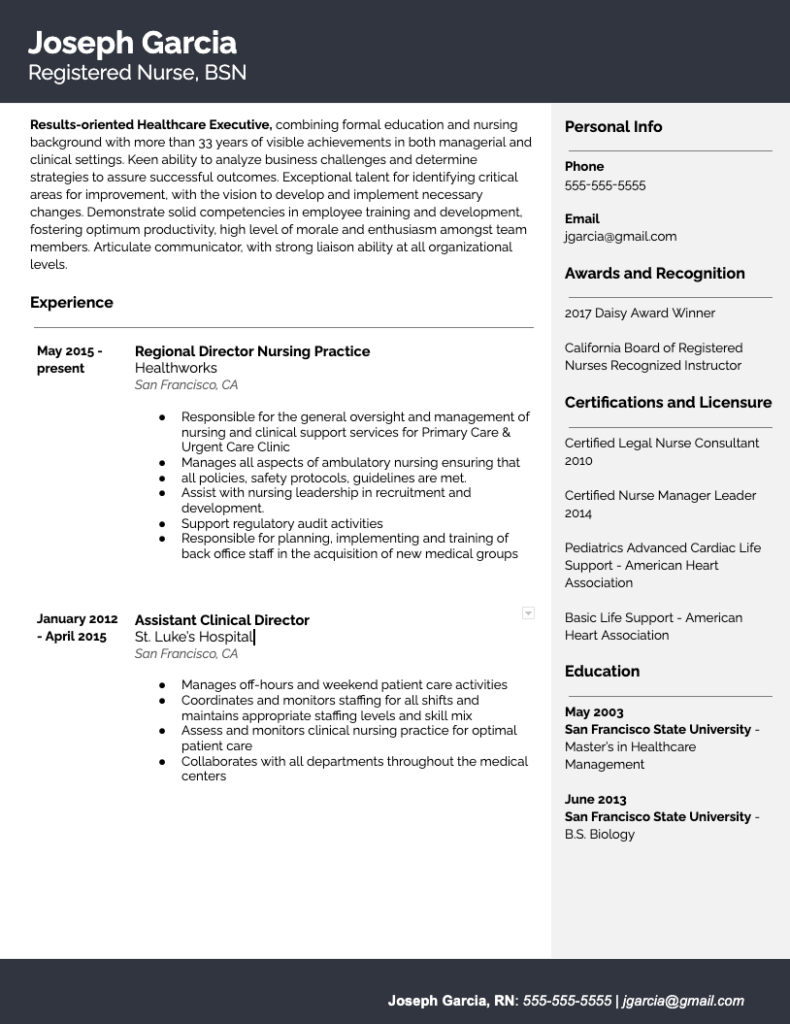

Imagine a registered nurse going into a patient’s room without a stethoscope or wearing sandals with their scrubs. The patient would feel confused and uneasy. This example is extreme, but it would relay to the patient their nurse isn’t prepared.
The same holds true regarding your nursing resume. You don’t want to walk into an interview without a quality resume to present to the hiring board.
“I don’t have time to write a resume, and if I did, where would I start?”
Nurses work long shifts, which can make it difficult to devote time to working on anything outside of their scheduled hours. Accordingly, we have created a guide to help you quickly and easily craft a resume.
This guide will help you enter the interview feeling confident and prepared. We will explore:
AI-powered resume builder for nurses.
We’ve provided three sample nursing resumes as guides along with templates so you can create your own.

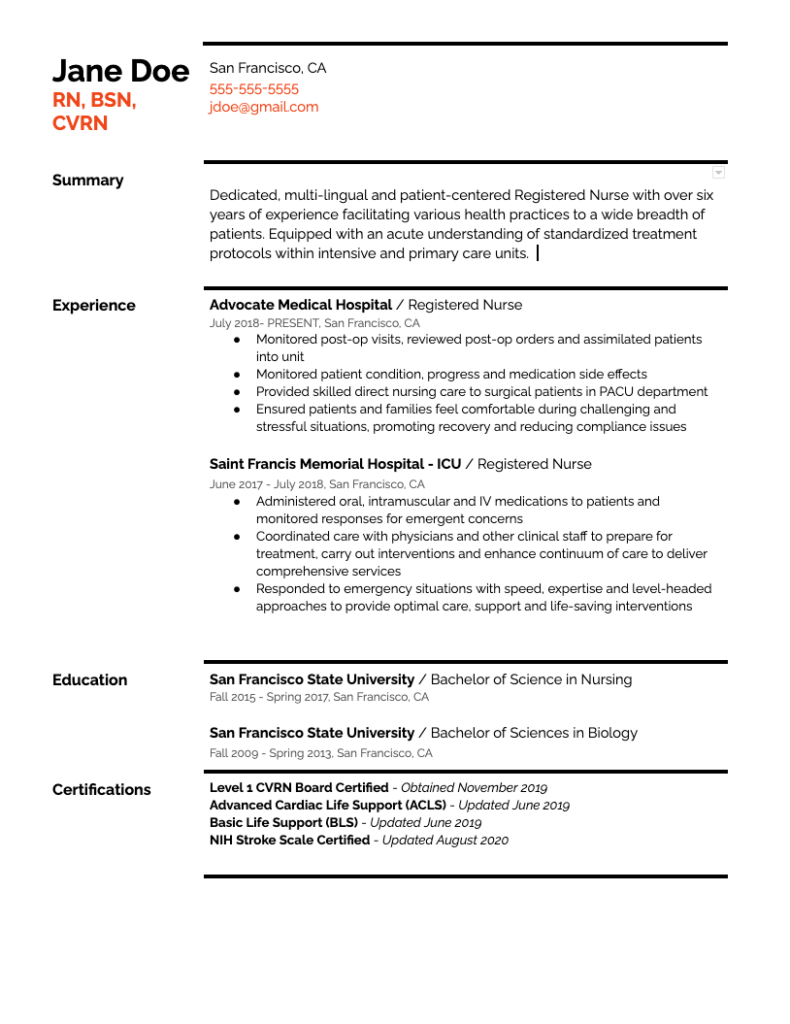
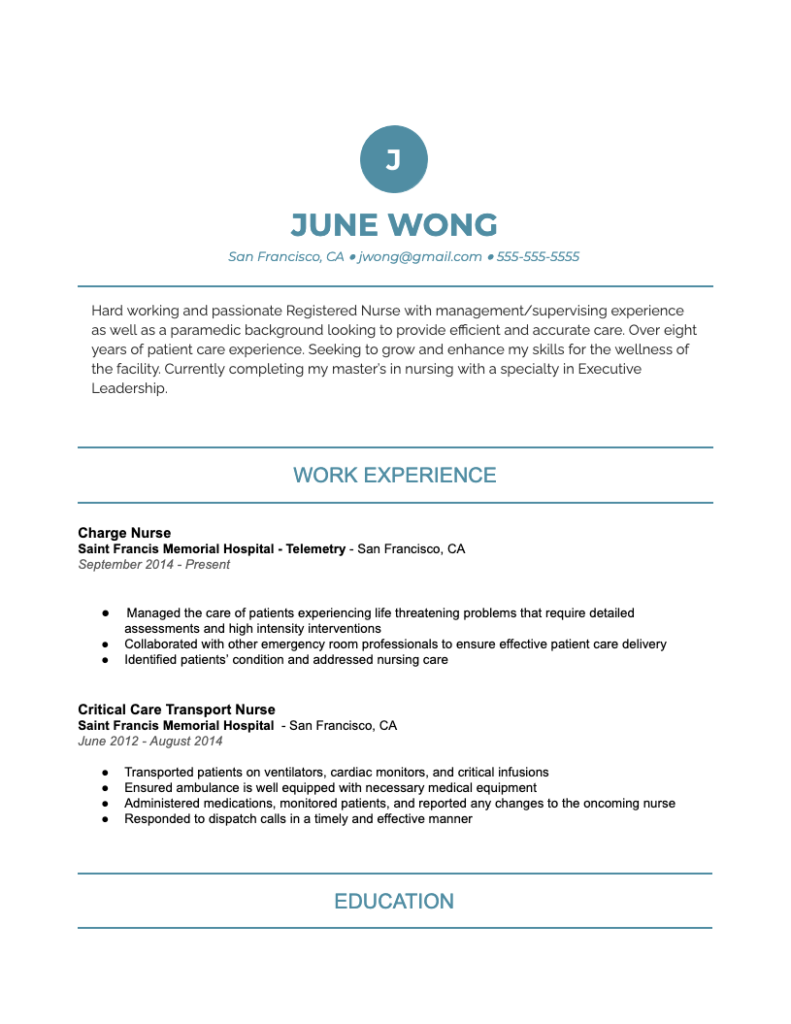
Hiring experts generally agree that formatting and content are the most critical elements to focus on when crafting a resume.
Many healthcare employers are now using applicant tracking software (ATS) as part of the hiring process. This means up to 75% of resumes get rejected before the hiring manager ever sees them.
An ATS quickly scans resumes and then sorts and ranks them based on qualifications. Optimizing your format to key on education and experience can help you gain approval from an ATS.
While you can choose how to format your resume, we encourage you to incorporate a reverse chronological design. This format lists jobs beginning with the most recent first.
Next, it is essential to choose a format that employs effective white space and utilizes efficient subheadings. We suggest that you set your margins to 1 “. You should align your text to the left since it makes it easier for the ATS robots to scan.
The best fonts to use for an ATS are Times New Roman or Arial.
AI-powered resume builder for nurses.
No need to overthink this. It doesn’t take a quantum leap to make this deduction: Your resume always needs to begin with your name at the top. It would also help to make it the largest font on your resume.
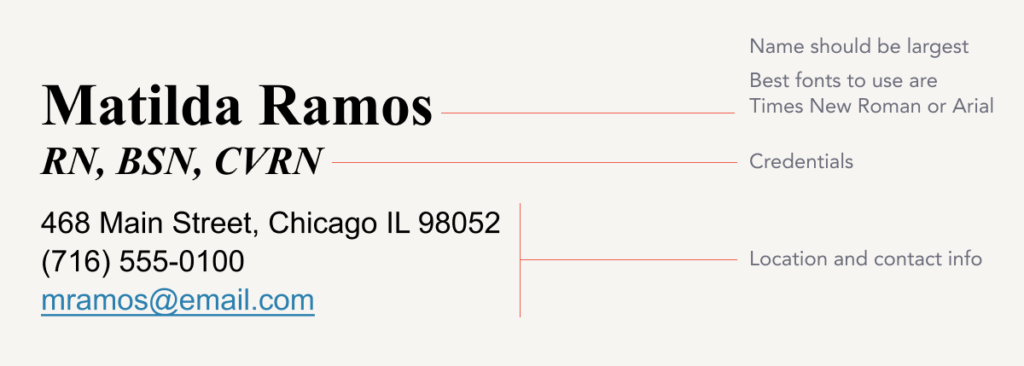
Next to your name, make sure you include:

The applicant tracking software has helped make the recruiting process much more efficient for hiring managers. While there isn’t a definitive process to always beat the ATS, there are general rules to follow to create a resume that will increase your success rate.
Think of your nurse resume objective or summary as an elevator pitch. Crafting a good objective is all about precision and brevity.
Whether you write a nursing resume objective or summary depends on your experience. If you don’t have a lot of experience in nursing, then you should write an objective. Objective statements highlight training and goals for the future.
Don’t make the mistake of over-emphasizing your relative inexperience.
Highlight what experience or training you have accumulated. For example, lead with any licensure or state designation you’ve earned to begin your objective. Then go into some of your skills that make you a good fit for the job.
If you have experience in the field, we suggest that you use a resume summary.
Within the summary, make sure you include how many years you’ve been in the field with your designation or licensure and specific field expertise. Then outline your goal in applying.
Here’s an example:
Hard-working and passionate Registered Nurse with over eight years of management/supervising experience and paramedic background looking to continue to grow and enhance my skills for the wellness of the facility. Currently completing my master’s in nursing with a specialty in Executive Leadership.
A good nursing resume will highlight hard and soft skills. A lot of your job depends on performing specific duties, and the recruiter will hone in on those when scanning your resume.
Most professions emphasize accomplishments in a resume over skills and duties. For many, accomplishment-driven resumes highlight what an individual can do for a company. However, the nursing field prefers a skill-driven resume. Healthcare employers need to feel comfortable that you can perform the skills necessary for the job.
That said, employers also want to know about your accomplishments as well. The best nursing resumes are able to incorporate a professional accomplishment with a skill.
Tailor your skills to the role outlined within the job description. If you have administered chemotherapy drugs or radiation therapies, then place it in there. Be specific!
This is the meat and potatoes of your resume. Writing a striking experience section will go a long way in securing a terrific nursing job.
Nursing recruiters are not looking for fluff or abstraction. They want specific and detailed accounts of your work over the years.
To start, you want to use easily distinguishable section headers such as “employment history” or “relevant experience.” These buzzwords make the ATS happy.
We suggest writing your experience down in reverse chronological order.
Start with your most recent position and go from there. Now, if you have held jobs dating back to the Reagan administration or when The Sopranos was on TV, maybe don’t include those.
Try to keep your job history within the last 20 years.
Instead of just listing your responsibilities with bullet points, convey your accomplishments using quantitative measurements when possible.
For example, instead of saying: “Helped discharge patients.”
Try instead: “Administered 10 discharges an hour during my shift. Provided ample health care education to patient and family members.”
The second example is more specific and detailed. It gives your employer a good idea as to your efficiency. Also, “administered” evokes more responsibility than “helped.”
Here’s an example of an excellent experience section:

You should also consider including the unit type you worked in. Did you work in the Neonatal Intensive Care Unit or an Emergency Room?
When highlighting your experience, use strong action verbs such as “assisted” or “displayed.”
Lastly, highlight transferable attributes that can apply to any position, including leadership skills, project development, or communication.
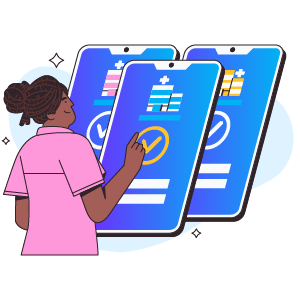
What's your current role?
You may have significant credentials to help you secure a great nursing position. There’s no problem with having credentials. The problem occurs when you don’t know how to organize your credentials effectively.
Imagine a symphony conductor with great individual cello players that don’t know how to play in sync with each other–it would be chaos.
The same goes for organizing your certifications. You may have great credentials, but not arranging them correctly could create issues for your resume.
Luckily, there is an industry-standard for listing your credentials.
The following order is encouraged:
Education: Start with the year you graduated, degree type and major, university name, and GPA (if it was 3.5 and above). If you went to a prestigious school, you could also start with that. Additionally, if you are worried about age discrimination, we’d suggest you leave out the years studied. Unfortunately, ageism sometimes plays a role in the hiring of nurses.
2012-2014 Master’s of Science in Nursing
Duke University School of Nursing, 3.7 GPA
Your Licensure: With licensure, the important part is determining where to put them. If nurses have one or two licenses they will put them after their degree. However, if you have an extensive list of licenses, it may be better to place them in their own section.
It’s crucial to include the following:
Sample Nursing Resume License Entry:
Registered Nurse (RN): License number 3378931
Arizona State Board of Licensing, Active since January 2018
State Designations: These generally include more advanced destinations for nurses at the state level. Examples include the Certified Registered Nurse Anesthetist and Nurse Practitioner.
Certifications: Your certifications demonstrate a commitment to improving as a nurse. Nurses can work without certifications in many cases. However, some jobs offer pay raises for nurses that have them.
We suggest the following order for listing your certifications:
Sample nursing resume certification:
Acute Care Nurse Practitioner from the American Association of Critical Care Nurses, Current – 2018
Awards and Honors: Your awards and honors can include those received in school or at another job. You want to list the name of the award, the awarding body, and the date received.
You may feel like you’ve put a lot of work into your resume up to this point. You have. Since you’re trying to land the perfect nursing job, you want to make sure that you round out your resume. The other sections you should add to your resume are:
List any additional terms you have completed as a nurse and any conferences you may have attended or even spoken at.
The ability to speak multiple languages gives you a leg up over your other nursing competition. Don’t hesitate to put in if you know other languages and designate your level of proficiency.
An employer is hiring a human being, not a robot. They want to hire someone who they can get along with, so listing your hobbies and interests may serve you well. Additionally, listing a hobby might give your supervisor an idea of whether or not you’d be a good culture fit on the team.
Before you wrap up your resume, make sure you proofread it, and if you can, have someone else read it over for you.
You don’t want your resume to get rejected because you spelled “stethoscope” wrong. Last, when saving your resume, make sure you cave it as a word document or PDF compared to any alternative, older file.
Our last parting wisdom to you is to have a cover letter that complements your resume.
The cover letter gives your recruiter the confidence that you are interested in them specifically.
Having a great resume is fine and all, but it’s much like giving someone a handshake and not giving a greeting. It’s a complementary piece that needs a cover letter to reinforce and expound on the ideas covered within it.
In other words, the cover letter explains why you chose the company and helps them understand that you aren’t just spamming several companies with your resume.
By this point, you’ve put a lot of time into your resume. You should feel proud of yourself. You’re on your way to landing that new job. Now, it’s time to prepare for the interview. If you need help with that, we’ve got you covered as well.
You can write it either way. However, make sure you separate each with a comma. For example, write Jane Doe, RN, BSN or Jane Doe, BSN, RN.
What is the strongest skill as a nurse?There isn’t one skill that stands above the rest as nurses have to possess many different skills. However, some of the most important ones include problem-solving, attention to detail, organizational skills and multitasking.
What is the highest nursing degree?The Doctor of Nursing Practice (DNP) is the highest degree a nurse can obtain within academia.
AI-powered resume builder for nurses.